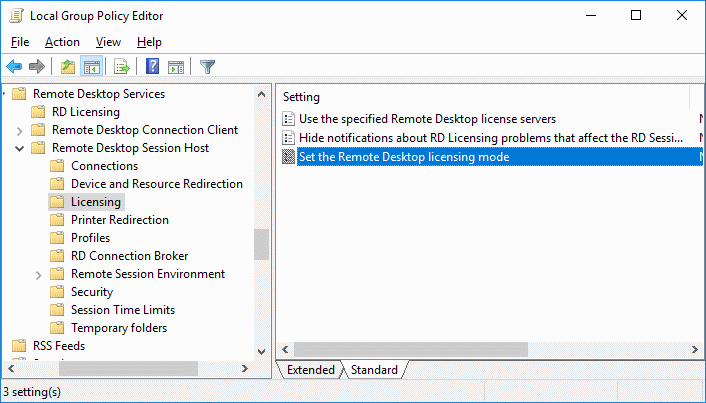

All you have to do is go to the collections tab, in the top area of the tab you should then see the collection/collections that you have put in place, you simply need to right click on the collection you want to remove and click “remove collection”. If you wish to remove a collection for any reason, the process is quite simple. You will now see the collection listed under the “Collections” tab in Server Manager. Once you are happy, please proceed with the setup and it will complete. The next screen will then confirm all of the settings that you have selected and ask you to confirm you are happy to proceed. Generally, this option is left unticked and folder redirection is used but if the admin wishes to use User Profile Disks, this would be the moment to enable them. This particular section is completely up to the admin who has set up the domain, if they have already set up redirected folders then there is no need to use User Profile Disks. On the next screen, you will be asked if you wish to set up User Profile Disks. If all domain users are required to have access then you can add the group “Domain Users” to this list.

On this screen, you will be asked to select the user groups which will be granted access to log into servers within the collection. Once you have added the servers, please press next. For example, you may have multiple Terminal Servers which you may want to load balance between, this is where you would add them. The next step is to select the relevant servers from the server pool listed that you would like to become a part of the collection. You will then need to create a suitable name for the collection and (optional) description and press “Next”. The first step in the wizard will be to press next after you have read the information.
Server 2016 remote desktop services install#
Choose Standard deployment and click Next Select Session-based desktop deployment and click Next Windows Server 2016 will now ask you to install the roles that you would not normally have installed in Remote Desktop Services for Windows 2008R2. You will then need to go to the option of “Create Session Collection”, once there it will present you with the following wizard. Select Remote Desktop Services Installation, then click Next. Then go to the “Collections” tab, and go to the top area and click on “Tasks” as per the below screenshot. Once you are there, please ensure that the servers that you require to be in your collection are listed in the “Servers” list. Once server manager has opened up, you will need to go to your “Remote Desktop Services” tab.

Go to the server that you would like to access the collection from and open Server Manager. This also helps to manage the access to the terminal servers. I am currently filtering the huge mess that is called Event Viewer and will edit with logs of the issue.Having RDS collections can be very useful if you have a situation where you are an administrator for a terminal server and need to “Shadow” users sessions or send them messages. I have spent some time googling this, reading similar issues although could not find a workable answer and our system is also different as most people who have this issue have 1-5 people logged on where we average around 100 users. (Sometimes I am actually unable to logon through the Hyper-V console and I need to Turn Off the machine and restart.) The current solution I have is to log onto the host machine and use the Hyper-V console to login to the server and simply restart the Remote Desktop Services service and that normally would solve the issue temporarily.
Server 2016 remote desktop services update#
This would only happen around once every 2 weeks so was really not an issue although recently there was a Windows update (which Windows will force on you if your Server is on the internet) and since the update this has been happening every few hours and sometimes even after 30 minutes of me fixing it! With this server we would occasionally have an error show up:

We normally have an average of ~100 people logged onto the server and around 50-70 active sessions at any given time. We have a Windows Server 2016 Virtual Machine running in Hyper-V and is used as our internet desktop (as our normal desktops run on Server 2012R2 and do not connect to the internet.


 0 kommentar(er)
0 kommentar(er)
